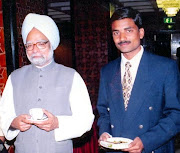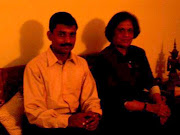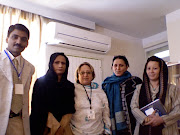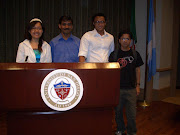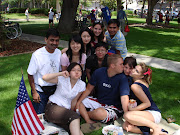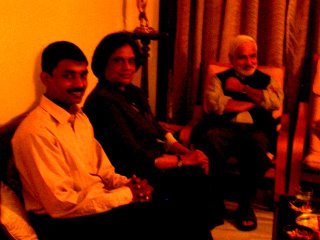
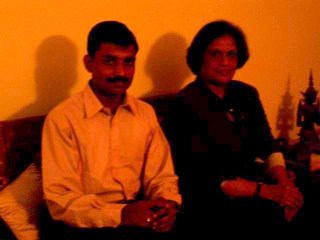
This online diary captures the best of my readings, analysis and opinions.



The urgency to complete this article is due to the current storm over the legality of the Chittagong Hill Tract (CHT) Manual Act, 1900 after 150 years of its enactment which has triggered tension and anxiety among the hill people in the CHT. A person named S.P Marma from Rangamati filed the writ petition with the High Court challenging the legality of the CHT Manual Act, 1900. Though the hearing of the writ will be held shortly, it has switched on yet another panic button in the CHT. The Adivasi leaders of CHT expressed their anxiety and worry over this issue and feared that, if the court rule goes against the act, ‘indigenous life and culture would come under threat and even the history of CHT might be distorted’. The three circle chiefs (Mong, Chakma and Bomang) of the Khagrachhari, Rangamati and Bandarban, CHT Regional Council and the Headman (village chief) Association have already submitted separate memorandums to the Law Minister expressing their deep anxiety over the petition. Moni Swapan Dewan, the Deputy Minster of CHT Affairs, also expressed his anxiety to the government over that petition.
Historically speaking, it was in 1860 the British government divided the Chakma
In August 1947, the British handed over the administration of CHT to the government of
But from 2003 onwards there were frequent writs challenging the legality or the constitutionality of several Acts of the CHT. Earlier, the Hill District Council Acts of 1989 and the CHT Regional Council Act of 1998 have been challenged in the Bangladesh Supreme Court through two separate writ petitions. The petitioners have alleged that ‘having a separate regional council for the CHT violates the unitary framework of the Bangladeshi republic’, and that it relegates the Bengali inhabitants of the region to ‘second class’ citizens and thus, offends the equal rights or non-discrimination clauses of the constitution. The recent controversy over the legality of the CHT Manual is also deliberated move in that line. It has to be understood that the absence of direct constitutional backing for the CHT self-government system with its primacy to indigenous peoples makes it susceptible to legal challenges in the High Court as a potentially unconstitutional arrangement. If the court orders to stop the implementation of CHT Manual Act, 1900, the Hill people will have to face legal battle against that, leading to yet another tragedy.
Over the years, cynical and shameless manipulation of the poor and powerless voters through competitive populism has become the dominant feature of our elections. The current Tamil Nadu Assembly election has shown that this process of manipulating the vote has reached the nadir. The DMK-combine promised colour televisions to each family!
This is by no means the first time when a party offered freebies to the unsuspecting and hapless poor. Most candidates habitually offer money and liquor for vote. And since the early 1970s, politicians have perfected the art of using public money as inducement for vote. Ostensibly, all these promises are intended to eliminate poverty.
But the gullible poor remain as vote-banks and no significant dent is made in poverty. The Garibi Hatao politics of the 1970s and the populist policies of NTR and MGR are good illustrations of the poor becoming an assured vote bank, even as their condition remains largely unaltered. The absurd campaign of Devi Lal in Haryana in 1987 marked a new low, when he promised to give irrigation water without “depleting the power in it,” as opposed to the Congress which allegedly generated hydro-electricity before allowing it to flow into irrigation canals! Devi Lal again hit headlines in 1989 by promising to write off farm loans. The loan waiver was eventually implemented by VP Singh’s government in 1990. The credit system suffered irreparable damage, and farmers continued to be in distress after the loan waiver.
The politics of free electricity has dominated our electoral landscape for long. Several states resorted to this, including the present Congress government in Andhra Pradesh. Farmers continue to pay huge bribes for new connections or services, power supply is erratic and utilities suffer serious losses, at great cost to the taxpayer. And yet, the cynical governments resorting to such short-term ploys reap rich political dividends.
But all these pale into insignificance in the face of the brazen DMK promise to give colour television sets. By this reckless promise, the sovereign voters are converted into mendicants. The tragic death of several poor women while distributing free saris in Lucknow in 2004 forever reminds us how the voter has been reduced to a beggar. But Mr Karuna-nidhi now seeks to institutionalise such mendicancy. In such political calculations, people are not human beings with dreams and aspirations, dignity and pride. They are reduced to being voters whose compliance is necessary for the power of a few manipulators.
Most of the subsidies and freebies offered by parties so far can be justified on the ground that they were meant to help fulfill potential or prevent suffering, or support the weak and vulnerable. But colour television sets cannot be justified on such grounds by any stretch of imagination. That is why Mr Karunanidhi’s promise has implications beyond Tamil Nadu and this election.
If such a reckless electoral tactic goes unpunished or unchallenged, who knows what tomorrow will bring? In a future election, a party may offer free motorcycles, another will promise refrigerators to all and a third will give motorcars! And why not guarantee a hundred bottles of free liquor annually to every family? And all this, with public money. This will certainly bankrupt the treasury. The election will go to the highest bidder. Once such promises are honoured, nothing much more can be done. Education may be in a perilous state, denying poor children an opportunity to enlarge their horizon and acquire skills; we may have more televisions than toilets, and people may suffer indignity, humiliation, in-convenience and ill health on account of public defecation; and public health may be in shambles, forcing millions into sickness and debt trap. But once people get televisions and scooters, the state does not have resources to do the things that it ought to do.
Therein lies the real tragedy. The state is ready and willing to do what it need not, or ought not to do, at the cost of its essential functions. Poverty is perpetuated and millions remain as vote banks, seeking alms and freebies that will never improve their condition. The netas and their families, of course, continue to thrive in the ‘service’ of the people. The servant becomes the master, lording over people, and the sovereign citizens become mendicants, propping the political fortunes of a few individuals and their kith and kin.
This must stop. If the parties have any sense of shame and spirit of public service left in them, they must come together to put an end to this culture of mendicancy. The media, busy peddling the week’s sensation, must rise above the mundaneness of daily occurrences, and mobilise public opinion to reshape politics. The time is now, before all parties subvert our democracy fully and public office becomes the preserve of the highest bidder.
The Islamic world has responded to the globalizing changes at inward-oriented and outward-oriented levels. At the first level some Islamic states joined other multi-lateral globalizing institutions with a view of benefiting from them. At the second level, the main inter-governmental institution of the Islamic world – Organisation of Islamic Countries, brought about some significant changes in its agenda and attempted to establish a dialogue with the West. However D-8 or Developing – 8 was structured not as an organization, but as a mechanism for development of cooperation among, Islamic countries from regions stretching from
The main objective of D-8 to be socio-economic development in accordance with the following principles: Peace instead of conflict, Dialogue instead of confrontation, Co-operation instead of exploitation, Justice instead of double-standards, Equality instead of discrimination, Democracy instead of oppression. The principal organs of the D-8 are the
May 2006 Summit at
The fifth summit of D-8 is scheduled to be held during May 9- 13, 2006 in
Deepened Disparities:
Although the achievements have increased the ability of the Islamic world to cope partially with some aspects of globalization, they have not been effective in bringing about a qualitative change in such ability. This is essentially because of various variables:
(i) Non-Homogeous: The Islamic world is not a homogeneous entity. It is divided along virtually all socio-economic and political lines of comparison including religious ones. All the countries participating to this initiative are members of other global or regional communities, and their economic and political priorities are intensified on other organizations. For
(ii) Pressures from global powers: The Islamic world is deeply penetrated by ‘powers of globalization’. The economies and security models of the Islamic world are mostly influenced by the agenda of the Western powers. Eg, EU initiatives towards
(iii) Rivalries and conflicts: Rivalries and conflicts among Islamic states over regional leaderships, and territorial issues are acutely clear in the case of
(iv) Economic Disparity: Among the D-8 countries,
(v) Geographical discontinuity: Apart from being sprinkled across disparate portions of
(Excerpts from a News Source)
No state in
Just two years ago, a tidal wave swept J. Jayalalithaa’s party off the electoral map during the general elections. Her strident attacks on “Sonia Maino” fell flat. More seriously, the government employees rebelled against her, alienated as they were by her action to break their strike only the year before the general elections. This proved critical as Tamil Nadu has the highest per capita ratio of government employees in
The last minute tie-up with the Bharatiya Janata Party proved to be a non-starter, alienating the sizable religious minorities against her in a state where Christians and Muslims together make up 11 per cent of the electorate. To add to this, the Dravidian ideologues were railing against her, following the enactment of measures to block religious conversion and the ban on animal sacrifice in temples. It is an amazing turnaround; one rarely seen in recent times but the present election is poised at knife-edge. The Centre for the Study of Developing Societies survey went so far as to say that the polls in the state are “too close to call”. Despite a slender lead of two per cent in the vote share of the ruling All India Anna Dravida Munnetra Kazhagam- led alliance, the result could tilt either way. Irrespective of whether she loses or wins, the chief minister has made this a battle worth watching. Placed in perspective, she has converted a huge vote deficit of 2004 into a minor surplus. If this trend continues, she might even look forward to a simple majority for her own party with no crutches from her allies.
There have been similar contrasts in recent years between Lok Sabha verdicts and state assembly elections. In 1998, Digvijay Singh in Madhya Pradesh led the Congress to a second term in office though his party lost the subsequent Lok Sabha elections in the state. Lalu Prasad and his wife performed a similar feat in
But there are two crucial differences in Tamil Nadu. One is a generational issue. This is almost certainly the last time M. Karunanidhi will lead the Dravida Munnetra Kazhagam, a party he has been a member of since its foundation in 1949, to battle. This may well prove to be his Achilles heel: his heir apparent and son, M.K. Stalin, lacks popular acceptance. This has forced the veteran to clarify publicly that he will be chief minister after his party wins at the hustings.
The other has been a significant feature of the Tamil Nadu polity for the last two years. Jayalalithaa has crafted her policies to defuse disaffection among the very sections that bolted from her party in 2004. The arrest of the sankaracharya of Kanchi was well publicized to reaffirm the belief that religious leaders were not above the law. Less publicity was given to rescinding the law on conversions, or to the expansion of the free meal scheme in temples to churches and dargahs. There was also a rapprochement with the powerful government employees’ unions.
The turning point came with the tsunami in December of 2004. Contrary to knee-jerk press reports specifically in the audio-visual media at the time, the state government handled itself with considerable alacrity and speed. A similar drill was in place during the floods the following year. Jayalalithaa’s opposition to the Sethusamudram project taps into genuine fears of the fisher folk about their livelihoods.
Jayalalithaa’s other masterstroke was the timing of the bicycle gifted to high school girl students. In her first hundred days in office, in 2002, she announced a programme to give a cycle to every Dalit girl. Two years ago, this was extended to all girl students in Class XI and XII. It is important to note that these students will comprise a significant chunk of first generation voters now that voting begins at the age of eighteen.
This is also perhaps the first time in many years that a chief minister is campaigning by highlighting her performance. The opposition is anxious enough to promise free colour television sets and rice at two rupees a kilogram to the poor. To be sure, the DMK has a formidable lineup of allies and is fighting hard. Its main bastions lie in north Tamil Nadu where its ally, the Pattali Makkal Katchi, is also strong. Further sources of support include the left and the Congress. Both are localized but in this contest every seat and vote will count.
History is testament that the incumbent usually loses power in Fort St George. In recent times, only the late M.G. Ramachandran managed the feat of never losing a single assembly poll. Yet the legacy of the past weighs equally heavily on the DMK. When E.V. Ramaswami Naicker announced that he was marrying in order to beget an heir, C.N. Annadurai founded the DMK as a revolt against the idea that power flowed through lineage. It is ironical that Karunanidhi’s own party now has a line of succession that runs from father to son.
It is here that the chief minister’s choice of allies shows a shrewd political mind. V. Gopalsami or Vaiko left the parent party in 1994 protesting against dynastic politics. He retains a thin layer of supporters across the state. Equally crucial are the Dalit Panthers, a militant party led by T. Thirumavalavan. This is the first time that a Dalit party has such a prominent role in a larger alliance. Both parties compete with specially tailored welfare measures for the poor and have their own blend of growth and welfare.
The choice is still a very important one. Five more years of the AIADMK will mean continuity, and this will shake up the UPA coalition. Karunanidhi is banking on the arithmetic of alliances to bring him back to power one last time. Its maths versus performance. This election looks like a cliffhanger though a come back for the ruling party may well be on the cards.

Michael Sullivan Sr. (Tom Hanks) is a trusted aide to John Rooney (Newman), an Irish American organized crime boss. Sullivan, an orphan and a soldier in the Great War, was adopted by the older man as a child, and he has been working with him ever since his teens. Rooney treats Sullivan as a surrogate son, being closer to him than his own son and heir, the vain and insecure Connor Rooney (Daniel Craig). Further frustrating Connor, his father treats Sullivan's two sons, Peter and Michael Jr. like grandchildren. At a wake of a former buisness associate, Michael Jr. and Peter notice the subtle friction between their father and Connor.
Sullivan senior and Connor are instructed by Rooney to deal with Finn McGovern, another employee of Rooney's whose brother was murdered by the Rooney organization as punishment for allegedly stealing from them. Unbeknownst to both Michael Sullivan and Connor Rooney, a curious twelve-year-old Michael Sullivan Jr. hides in the car and witnesses the ensuing scene where Connor, acting against his father's wishes, murders McGovern. The shocked Sullivan Sr. swears his son to secrecy, while John Rooney humiliates his son by demanding an apology for his seemingly hotheaded actions. Ostensibly to prevent the threat of Sullivan Jr. divulging the murder he witnessed (but in reality feeling jealous of and threatened by Sullivan Sr.), Connor, again against his father's wishes, attempts to have Sullivan murdered at the same time as personally killing his wife Annie and younger son Peter. Both Sullivan Sr. and Jr. survive the attempt on their lives and flee to
When it becomes clear that Al Capone's crime syndicate will not countenance Sullivan's goal of taking revenge on the Rooneys, he develops an elaborate scheme to protect his son and to blackmail the mob into giving up Connor by robbing its secret accounts in banks throughout
It later becomes apparent that Connor has been embezzling money from his father, holding the money under the names of gang members that he has murdered. Confronted by Sullivan with the evidence that his son has been betraying him, John Rooney refuses to stop protecting Connor. He reminds Sullivan that, they too, are murderers, that this life they chose, and that "none of us will see heaven." Wanting his son to avoid traveling the road he has taken in life, Sullivan has a difficult decision to make. In order to gain revenge and protect his son, Sullivan must then kill the members of Rooney's gang, including John Rooney. He is then able to track down and avenge himself on Connor. Since Capone protected Connor because he was only Rooney's son, there was no more reason to hide him after his father was dead.
Subsequently, the psychopathic (and disfigured) Maguire succeeds in tracking down the Sullivans and murders Michael Sullivan senior at a beachside house in Perdition. Apparently, he traced a call placed from Sullivan to his wife's sister, Sarah, and he was able to determine that they were headed for the town of
Former Minister of Justice, Constitutional Affairs & National Integration
The Democratic
VENUE:
How do you reconcile ethnic and cultural diversity with the concept of mature and cohesive nationhood? Certainly in
I think that is a central challenge facing many of the countries of the developing world.
In
How do you do this within the framework of a single state? In
What we are now contemplating is the changing of that unitary structure to admit of a degree of power-sharing, which is generally associated with quasi-federal structures. Now the question that is asked is: We're all familiar with the phenomenon of independent entities coming together within the framework of a federal state, but is it possible, is it feasible, to envisage a country which has always been a unitary state now adopting, as a result of a political process, quasi-federal structures and mechanisms? That has been a question which has been put to us, very pointedly, in the course of the constitutional initiative which is taking place at the present time in my country.
I need to tell you that one of the problems that we face here is an emotional problem. Not people being cerebral, reflective, thinking consciously about these matters, but an intuitive and emotional response to these very mixed and convoluted issues. The problem there is this: Many people feel, in our part of the world, that federalism is the precursor to the physical dismemberment, or the disintegration of the nation state. If you proceed in that direction the end result would be the break-up of a national state. Now many people are suspicious of federalism in our country. They are suspicious because they feel that this is the thin end of the wedge. Once you begin travelling in that direction how do you stop short of the physical disintegration of the state?
So it is the emergence and the consolidation of structures which have enabled people coming from a diversity of cultural backgrounds to feel at home in their respective nations. It is these mechanisms that have enabled the survival of these entities as unified countries. Now, that may be self-evident when you put the proposition in that way, but one has to overcome a high degree of emotion and convince people of the reality of that position. In doing so I think we have to jettison labels; nomenclature is not the most important thing. There are many countries in the world which do not fall neatly into this category of unitary or federal. There are hybrid structures. So I do not think that we should be slaves to stereotypes or to labels.
In my own country most of the problems are in the northern and the eastern regions where the majority of the people speak the Tamil language. That is, those are regions dominated by a minority. There is a similar situation in
Now, in
Now the situation is complicated in a country like my own where the minorities do not live exclusively in a particular part of the country. They do live in the northern and the eastern provinces, but then there are large numbers of Tamil-speaking people who live in the capital city and its environs. So a viable structure cannot consist simply of the devolution of power to regions. You have to look at the problem of power-sharing at the centre and develop appropriate mechanisms to accomplish that objective.
Then there's this one other element that I need to refer to. These problems in our part of the world cannot be analyzed solely in terms of majority versus minority. What imparts a particularly complex dimension is the minority versus minority aspect. In
It is also important, I think, to make the point that in our part of the world, certainly in
There must be a high degree of public awareness of the value systems that are sought to be embodied in the constitutional arrangements. You need a vigorous press. You need trade unions. Political parties. You need democracy within political parties. You need certain regulatory mechanisms with regard to the finances of political parties. There must be access to justice. The ombudsman or the equivalent of the ombudsman must have a significant role to play. So some degree of egalitarianism is necessary in order to make a success of some of these principles, so one is to have a holistic conception of human development, and the political and economic structures that come into being must reflect that commitment to pluralism, secularism, and the functioning of representative democracy.
With the State Legislative elections around, Vijayakanth, who recently floated his own party to test the waters in the elections, has come out with ‘Sudesi’ where he strives to reform the Chief Minister of the State. Though the preachy tone grates, the film has its moments. Vijayakanth takes dig at the present political culture in the State and indirectly projects him to be the savior on a mission to reform the corrupt rulers of the State.
What is significant is that the film depicts an arm-twisting a corrupt chief minister into introducing welfare schemes for the people with the help of an incriminating video. Sudesi, who chances upon the CD which has the execution of the existing Chief Minister, uses effectively for the betterment of the society at large. Though the movie is aimed at taking to masses the political agenda of Vijayakanth, it has certainly offered few sure ways for good governance. It has a few radical ideas for change and reform, such as:
I am now to believe that it is not too difficult to impart a change in the system of governance. Though there are ingrained constraints in implementation of innovative plans, it is not totally impossible. “WHERE THERE IS A WILL, THERE IS
While thousands flock to Haridwar and Rishikesh for a religious ‘fix’ with a dip in the
It all started on Friday morning at
When we encountered the first rapid, our instructor started shouting 'Come on team, all forward', 'Forward Team, Forward.' But it was easier said than done. "Yaaah…….!," the full-blooded war cry was of no use in our herculean effort to paddle forward but it did help in squashing the butterflies in my stomach. There was no turning back from the ‘great wall of water’ in front of us and we braced ourselves as the swirling rapid buffeted the raft.
As I went under, I felt the cold water biting into my flesh . But as I resurfaced to stare at the sun, a feeling of exhilaration swept over me. Floating downstream in the pristine waters of the
Finally we reached the end point at Ram Jhula. The five hour journey was quite thrilling, exhilarating and memorable. Though there were other teams which managed to complete the stretch within 3 hours, we took our time to watch/admire the nature's bounty on both sides of the river. As our fellow traveller - German Friend- noted, 'Our aim was not for reaching (the end-point) but Journeying'.
The Partition of India ranks as one of the 10 greatest tragedies in human history. Numerous scholars have attempted to focus on the political processes that led to the vivisection of  on’, which traces the influence of British strategic concern culminating in
on’, which traces the influence of British strategic concern culminating in
The conversations with, and written communications to, the Viceroys were meticulously recorded by the British which do not fully emerge from the Indian records. Scholarly attention has been riveted on those complex negotiations, and their minutiae, leading to partition as well as on the personalities of Gandhi, Nehru, Jinnah, Patel, and others, and a substantial body of literature also exists on the manner in which the boundaries were drawn between
The book also reveals how novice was the Indian Nationalists’ miscalculations, their ideals divorced from realities and their inexperience in the field of international politics emerges in their own words in the records. Firstly, the resignation of Congress ministries when they were in power in 1939 enabled Jinnah and his Muslim League to come to the fore. Secondly Congress was reluctant towards supporting the war effort further alienated
The author cautiously drives home the fact that though
Fifty-eight years after Partition, it is worth re-examining whether the British fears of
It is a most welcome addition to books dealing with the partition of
Besides the rise in Islamic fundamentalism, the political and law and order situation in Chittagong Hill Tracts (CHT) have deteriorated alarmingly in recent times as the two main rival organizations of the region, Parbattya Chattagram Jana Sanghati Samity (PCJSS) and the United People’s Democratic Front (UPDF), and several groups of armed cadres are resorting to open confrontations. Abductions are being followed by kidnappings while murders are being avenged by gruesome killings. A total of 500 persons were killed, around 100 abducted and more than 1000 injured during the last five years in CHT. As many as 24 armed clashes between the activists of PCJSS and UPDF had occurred during the same period. Besides, the miscreants were engaged in gun battles with army men and police eight times during the last four months. The armed cadres of both PCJSS and UPDF had set fire to tribal villages and markets in remote hill areas of CHT. Sources said the activities of the rival political parties in CHT resulted in more than 60 gunfights in the last eleven months. Moreover many incidents of abduction took place in the CHT including the kidnapping of three foreigners from Naniarchar under Rangamati district on February 16, 2001.
Looking back into the history of the CHT problem, (which this article intends to do) it is interesting to note that the CHT was an autonomously administered district, in British administered India and was safeguarded by the Chittagong Hill Tracts Regulation 1900, which prohibited sale and transfer of land to non-indigenous people. The Chittagong Hill Tracts (CHT) in southeastern Bangladesh covers an area of approximately 5,093 square miles, and borders India to the north and Myanmar (Burma) to the east. After the partition of British India in 1947, the CHT was given to Pakistan. As part of Pakistan, the Chittagong Hill Tracts lost its special status and autonomy under an amendment to the Pakistan Constitution in 1963. Pressure for land to cultivate had in the past led to the migration of large numbers of non-tribal people from other parts of Bangladesh into the Chittagong Hill Tracts.
The government of Pakistan, in a bid to open up the hill tracts and tap its potential hydro-electric resources, constructed the Kaptai Dam in 1962 which submerged 54,000 acres - nearly 40 percent - of the best agricultural land, and displaced about 100,000 indigenous people. Prior to the creation of Bangladesh in 1971, the population of the area consisted almost entirely of people from 13 different indigenous tribes. Between 1964 and 1971, the Pakistan government amended Regulation 1 of the Act of 1900 to allow ‘migration of non-tribals into the hill tracts and transfer ownership of land and other resources of CHT to non-tribal people from the plains’. The emergence of Bangladesh in 1971 saw the projection of a homogenous Bengali nationalism, with the citizen of Bangladesh defined as a Bengali in the Constitution. No separate status or identity was recognised. This triggered the ethnic conflict in the Chittagong Hill Tracts.
These perspectives have the potential to aggravate local issues and increase the tension between the CHT communities inherent in any post-conflict situations. They could affect questions relating to the withdrawal of the army from certain camps which, despite the provisions of the accord, has been only partially implemented; the possession of land which continues to remain unresolved; the CHT seats in the parliament which have traditionally gone to the national parties providing them with an effective vehicle to impose their own political agenda in the area which could now be at variance with the policies of the Regional Council; and the judicial processes which the tribal people are reluctant to use due to years of mistrust and which the more litigant non-tribal people could use to settle their differences with the tribal people.
In any case, there is concern that expectations in these regards have not been fulfilled. The post–accord grievances relate to the government’s failure to make the CHT a completely demilitarized zone, though the government has its own considerations in deciding to maintain army camps in the region. The tribals are also unhappy with the lack of full implementation of resettlement benefits for the returnees. Besides, there is dissatisfaction over the fact that the internally displaced persons have not been fully rehabilitated. This has led the situation in CHT more and more worse, and the common people are becoming gradually violent against the government policies. So if the CHT Accord is not implemented properly, the situation of CHT may turn into new directions in future.
